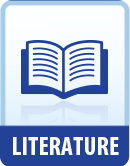|
This section contains 411 words (approx. 2 pages at 400 words per page) |

|
Art
Rilke studied art history and was a lifelong lover of the visual arts, writing essays on sculptors and impressionist painters, living at a colony for painters, and even marrying a sculptor. In The Book of Images, he tried to create the verbal equivalent to a gallery full of paintings. In "Childhood," he uses imagery in much the same way as painters do. For example, he uses successive images of the child being anxious, then happy, and then mournful to illustrate the rapid emotional changes that occur in childhood. In the foreground are the child's experiences, and in the background is the speaker's commentary on those experiences. Just as a painter uses the technique of chiaroscuro to produce the illusion of depth, Rilke uses images of light and darkness to evoke emotional volatility and psychological depth.
Memory
For Rilke, memory is a tool used to unlock the mystery of...
|
This section contains 411 words (approx. 2 pages at 400 words per page) |

|




